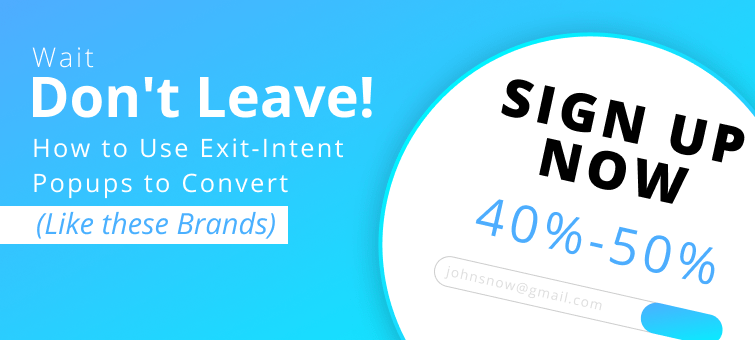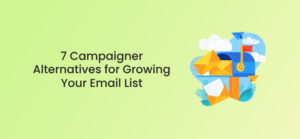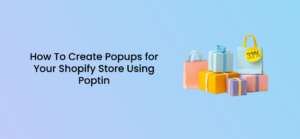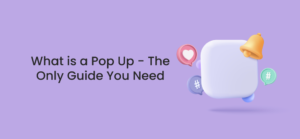Il était une fois, nous vivions dans un monde où les créateurs de sites Web bombardaient leurs visiteurs de publicités contextuelles ennuyeuses.
Cela a ruiné l’expérience en ligne et forcé des millions de personnes à intégrer des bloqueurs de publicités dans leurs navigateurs. Avance rapide jusqu’à aujourd’hui, et vous avez des marques qui utilisent des tactiques de marketing plus innovantes qui s’adressent à leur public cible. Fini les popups excessifs et sont arrivées des publicités popup plus stratégiques.
Cependant, certaines marques ont encore du mal à utiliser ces méthodes.
Aux Etats-Unis, 18 % du bureau et les utilisateurs mobiles utilisent des bloqueurs de publicités. Bien que ce chiffre ne soit pas stupéfiant, il montre qu'il existe encore des problèmes avec les sites traitant de popups embêtants.
Alors pourquoi les spécialistes du marketing devraient-ils les utiliser si leurs visiteurs n’en veulent pas ? La réponse simple : ce n’est pas une question de support ; c'est la livraison.
C'est pourquoi certaines marques de commerce électronique voient un Diminution de 35 % des visiteurs perdus simplement en implémentant des fenêtres contextuelles d'intention de sortie. Cela en dit long quand 72.8% de visiteurs abandonnent leur panier et 60 % supplémentaires quittent votre site.
Sinon, comment attirerez-vous leur attention avant qu’ils ne cliquent sur le « X » sur votre onglet ? Si vous parvenez à créer la fenêtre contextuelle idéale pour les visiteurs qui sont sur le point de cliquer, vous pouvez capturer 10 à 35 % de ces prospects.
Ce qui les distingue des fenêtres contextuelles typiques, c'est qu'elles n'apparaissent que lorsque l'utilisateur montre l'intention de quitter (d'où leur nom).
Ceux-ci sont intelligemment conçus et ne fonctionnent que pour les visiteurs les plus qualifiés. Cela signifie à son tour plus de conversions pour vous.
Il n'existe pas de méthode universelle, vous devrez donc mieux juger pour déterminer quelles fenêtres contextuelles fonctionneront pour votre client cible.
Voyons comment plusieurs marques utilisent avec succès les popups d'intention de sortie.
Belk : cibler l'acheteur avisé
Qui n’aime pas économiser de l’argent ? Chaque fois que les acheteurs en ligne ont la possibilité d'économiser de l'argent avec leurs marques préférées, ils en profitent.
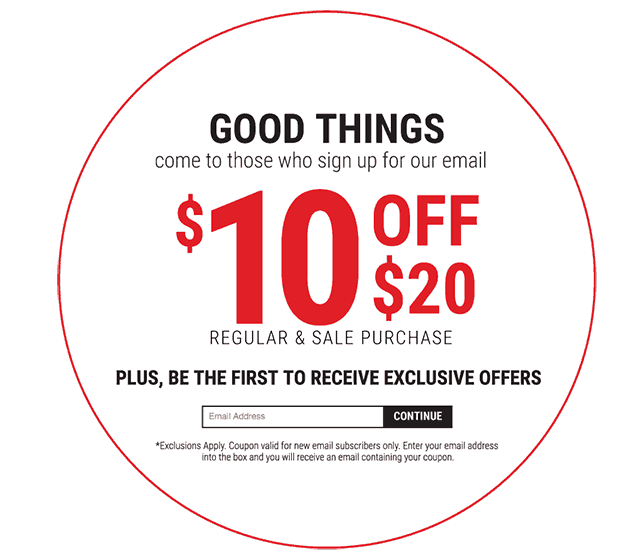
Et c'est ce qui fait le succès de cette fenêtre contextuelle d'intention de sortie de Belk. Vous trouverez cela couramment utilisé dans l’industrie du commerce électronique.
Il demande l'adresse e-mail du visiteur en échange non pas d'un mais de deux coupons – l'un de 10 $ et l'autre de 20 $ de réduction. Ensuite, ils inscrivent en gros caractères gras que le visiteur recevra des offres exclusives gratuites par e-mail.
C'est quelque chose que vous pouvez rapidement mettre en œuvre dans votre stratégie. Jouez avec différentes offres de coupons pour voir ce qui convertit le mieux.
Skullcandy : mener une guerre psychologique
Pirater l’instinct d’achat des acheteurs à des prix avantageux est une façon de mener une guerre psychologique. Mais il existe une autre façon, plus intelligente, de procéder.
Jetez un œil à cette annonce de Skullcandy.
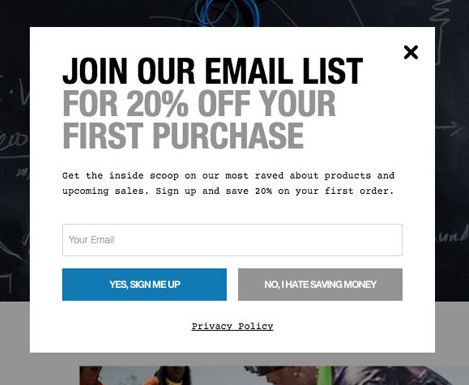
Il propose une offre de 20 % de réduction sur votre premier achat, ce qui est convaincant. Mais le kicker (et il est assez efficace) est l'option « Oui » ou « Non ».
Vous pouvez sélectionner « Oui, inscrivez-moi » ou « Non, je déteste économiser de l'argent ». Ce qui fait de l'appel à l'action négatif (CTA) une tactique intelligente, c'est que beaucoup de gens n'aiment pas perdre, rater ou admettre quelque chose qu'ils ne sont pas si fiers d'admettre.
Et si vous avez parcouru le Web récemment, vous trouverez des CTA négatifs assez bizarres. Assurez-vous que le vôtre soit encourageant et non rebutant.
BeHappy : réduire le taux de paniers abandonnés
Nous avons déjà évoqué le taux étonnant de paniers abandonnés observés dans les boutiques de commerce électronique. Mais que pouvez-vous faire pour inverser la tendance ?
Voici ce que font BeHappy et de nombreuses autres marques pour cibler les acheteurs qui tentent de sortir avant de payer.
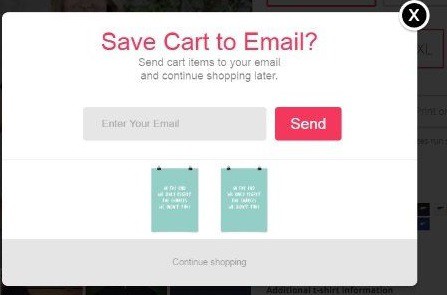
Lorsqu'elle est posée au moment opportun, une question simple peut aller très loin : « Enregistrer le panier dans un e-mail ?
Par exemple, supposons qu'un visiteur utilise sa tablette pour acheter des articles dans votre magasin. Elle est en déplacement et reçoit un message sur les réseaux sociaux qui finira par l'empêcher de revenir dans votre magasin.
Donc tu utilises une fenêtre contextuelle d'intention de sortie pour lui offrir une excellente solution : sauvegarder tous les achats qu'elle a effectués et les envoyer facilement dans sa boîte de réception. Et peut-être qu'à son retour à la maison, elle continuera à consulter son ordinateur.
Century 21 : Utiliser le mot « gratuit »
Vous ne trouverez pas beaucoup de marques proposant la livraison gratuite pour les commandes de moins de 50 $. Mais Century 21 a fait exactement cela et a une belle campagne.
Les offres irrésistibles, telles que les cadeaux, ont tendance à bien fonctionner pour les détaillants en ligne. Jetez un œil à cette fenêtre contextuelle de sortie pour voir qu'il n'est pas nécessaire de convertir des mots intelligents ou des designs flashy :
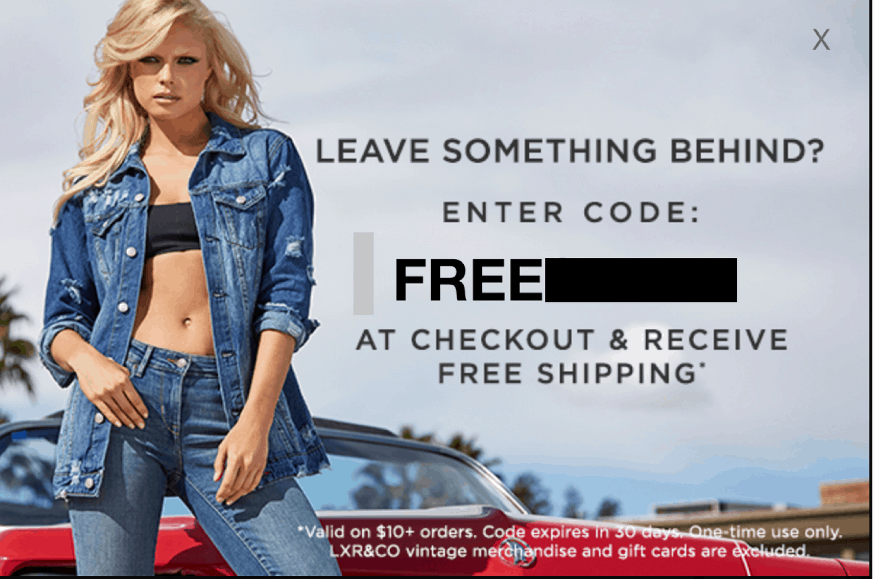
Il existe plusieurs raisons pour lesquelles cette annonce contextuelle fonctionne. D'une part, il utilise le mot gratuit, qui est gros et audacieux. Ensuite, l'offre de livraison gratuite s'applique aux commandes aussi basses que 10 $ (capture à la fois les gros dépensiers et les acheteurs légers).
Et enfin, il fixe une date d'expiration de 30 jours, ce qui donne aux acheteurs suffisamment de temps pour faire leurs achats tout en obtenant l'offre. Mais comme il ne s'agit que d'un usage unique, les acheteurs seront enclins à acheter autant que possible.
En retour, cette campagne a reçu un taux de conversion de 8.4 %. Cela représente 664 personnes qui se sont converties sur les 11,818 XNUMX visiteurs qui l'ont vu. Pas mal!
Alors, que pouvez-vous faire pour augmenter vos conversions ?
Comme vous pouvez le voir sur ces quatre exemples, il existe différentes manières et moments d'utiliser ces popups pour capturer des leads qualifiés. La clé est de garder à l’esprit les personnalités de vos clients et le parcours de l’acheteur.
Voici quelques idées pour cibler les visiteurs avec le bon message au bon moment.
Créer un fort sentiment d’urgence
Il existe plusieurs façons de créer un sentiment d’urgence chez vos visiteurs. Les deux tactiques les plus populaires consistent à impliquer la rareté ou à proposer une offre à durée limitée.
Disons que vous avez un visiteur qui s'intéresse à plusieurs produits et explore plusieurs pages de votre site. Vous pouvez déclencher un popup d'intention de sortie apparaître une fois qu'ils essaient de partir, cela dit quelque chose comme :
« 30 % de réduction sur votre prochaine commande ! » Ensuite, disposez d'un compte à rebours visuel à partir d'une heure. Voici un excellent exemple :
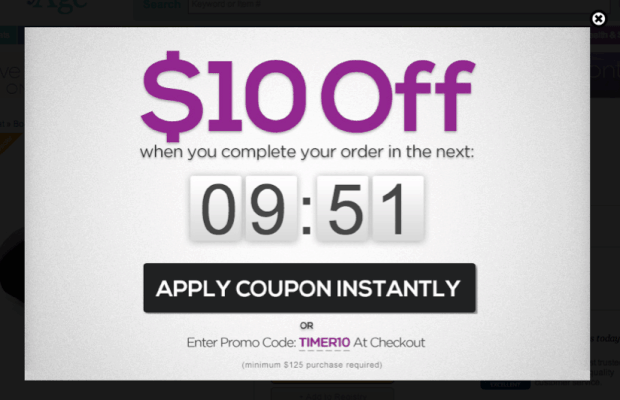
Les boutons de réduction, de minuterie et d'achat sont les plus visibles dans la fenêtre contextuelle. Le téléspectateur comprendra rapidement l’offre et le compte à rebours créera un sentiment d’anxiété sain pour agir rapidement.
Cependant, si vous souhaitez cibler les réactions en utilisant la rareté, vous pouvez faire quelque chose comme ceci :

Alors que votre visiteur est sur le point de partir, une fenêtre contextuelle le distrait. Ils constatent que l’un des articles qu’ils ont consultés est presque épuisé et peuvent décider de l’acheter immédiatement. C’est bien mieux que de magasiner et de rater une bonne affaire potentielle.
Offrez des choix à vos visiteurs
S’il y a quelque chose qui plaît aux acheteurs en ligne, c’est bien un choix. Alors dans votre annonce popup, pourquoi ne pas leur proposer plusieurs options ?
Par exemple, si vous leur demandez de s'inscrire à votre newsletter gratuite, demandez-leur de sélectionner leurs centres d'intérêt. De cette façon, ils reçoivent uniquement le contenu qu’ils souhaitent lire. Et cela contribuera également à augmenter les taux d’ouverture de vos e-mails.
Essayez de demander à vos visiteurs quelles sont leurs offres sur les vêtements pour femmes, les vêtements pour enfants, les chaussures, etc. De cette façon, vous pouvez segmenter vos campagnes de manière hyper ciblée.
Assurez-vous simplement de ne pas avoir trop d'options. Un bon 3-5 devrait suffire. N'oubliez pas qu'ils reçoivent des e-mails distincts pour chaque intérêt et que vous ne voulez pas qu'ils soient bombardés d'e-mails.
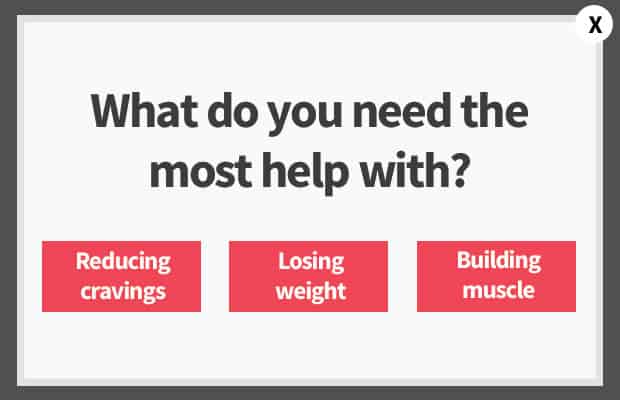
Lorsque vous offrez des options à vos visiteurs, cela les amène à prendre en compte votre offre de manière plus approfondie. Leur donner simplement une option par oui ou par non peut les inciter à refuser votre offre trop rapidement.
Création de fenêtres contextuelles d'intention de sortie qui convertissent
D'accord, vous êtes tous favorables à l'utilisation de fenêtres contextuelles d'intention de sortie pour convertir, mais comment les créer ? Il faut un mélange de compétences en conception et en codage pour les configurer correctement (ce qui peut vous manquer).
Ou du moins c’est ce que vous pensiez. C'est là qu'interviennent des services comme Poptin. Cette plateforme est simple à utiliser pour les débutants : choisissez simplement votre couleur, votre mise en page et votre design. Ensuite, vous le faites glisser et déposez-le sur votre site.
Il est compatible avec n’importe quel site Web, vous permettant d’être opérationnel rapidement. Si vous êtes prêt à démarrer vos fenêtres contextuelles d'intention de sortie, commencez à préparer des Poptins dès aujourd'hui!
